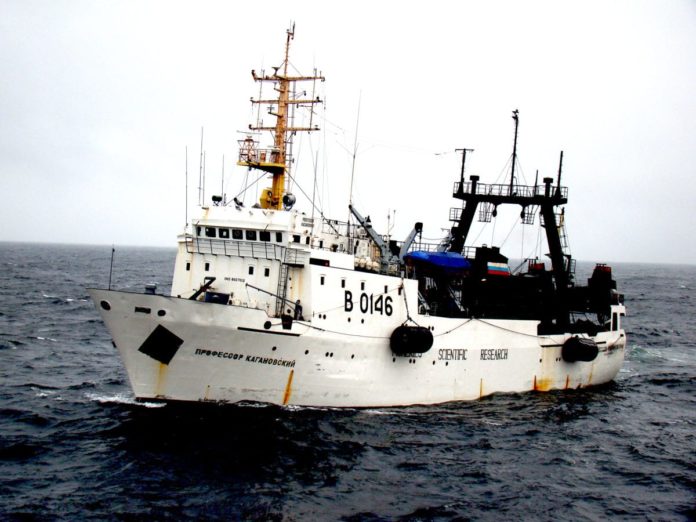
An international expedition focused on better understanding how climate change is impacting salmon in the Gulf of Alaska is underway through mid-March, with a team of 21 scientists from Japan, Korea, Russia, the United States and Canada.
The $1.3 million expedition, organized by the North Pacific Anadromous Fish Commission, departed from Vancouver, British Columbia, on Feb. 16 aboard the chartered Russian research vessel Professor Kaganovskiy, with plans to return to Vancouver on March 18.
The end of winter trawl survey, funded by governments, industry, non-governmental and private entities, aims to provide a comprehensive understanding of the abundance, condition, country of origin and location of salmon stocks, to help scientists understand the impact of how climate and ocean environmental changes are affecting salmon.
NPAFC is hailing the expedition as its signature project of the International Year of the Salmon, in concert with its North Atlantic partner, the North Atlantic Salmon Conservation Organization, and non-government entities including the Pacific Salmon Foundation. NPAFC is hoping to establish a new hemispheric-scale partnership of governments, indigenous peoples, academia, NGOs and industry to work together to address the scientific and social challenges facing salmon and the people who depend on them.
Expedition organizer Dick Beamish said that the Gulf of Alaska expedition is the first ever comprehensive winter survey of Pacific salmon in the Gulf of Alaska, for which the participating Pacific Rim scientists have volunteered to share data they collect with all of their colleagues. Beamish said he felt that the discoveries to be made will lead to an understanding of how to be responsible stewards of Pacific salmon as ocean ecosystems continue to change.
Everyone who was approached for help was strongly supportive of the expedition, he said.
NPAFC is an international inter-governmental organization established by the Convention for the Conservation of Anadromous Stocks in the North Pacific Ocean, which was signed on Feb. 11, 1992, and took effect on Feb. 16, 1993.
The primary objective of the NPAFC is to promote conservation of anadromous stocks in the convention area, the international waters of the North Pacific Ocean and its adjacent seas north of 33 degrees north beyond the 200-mile exclusive economic zones of the coastal states. Anadromous stocks of interest include pink, chum, sockeye, coho, Chinook and cherry salmon, and steelhead trout. Prohibition of directed fishing and forbidding retention of anadromous fish in the NPAFC convention area allows Pacific salmon and steelhead to return to their home waters, where benefits of each member’s investments in harvest management and conservation can be enjoyed, the NPAFC said.
To enforce conservation measures and deter illegal, unreported and unregulated fishing vessels in the convention area, member countries cooperate ad exchange information on their respective enforcement plans, coordinate patrol scheduling, conduct joint ship patrols an arrange for personnel exchanges for air and sea patrols, the NPAFC noted.














